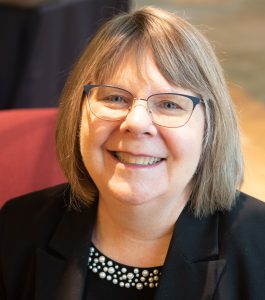Potato/Potahto, Microcredential/Micro-credential…Finding and Providing Clarity in Defining Microcredentials
Published by: WCET | 6/30/2022
Tags: Credentials, Managing Digital Learning, Student Success
Published by: WCET | 6/30/2022
Tags: Credentials, Managing Digital Learning, Student Success
What is a microcredential? A certificate? Bootcamp? If you are confused, you are not alone. Currently, there are no industry-wide standard definitions for microcredentials. There are several national initiatives coalescing around developing standard terms to provide cohesion and clarity. While this is incredibly promising and exciting, your organization may need taxonomies prior to national standards being adopted. Digital Promise defines a microcredential as “A competency or skills-based recognition that allows a learner to demonstrate mastery and learning in a particular area (Digital Promise).”
Establishing a common understanding of terms across your organization is critical to any microcredential initiative. To help you navigate this murky sea, we compiled several recommended resources (see box 1) and called on several experts within the WCET community to share their advice.
Recommended Resources for Definitions and Key Terms:
But first, read the previous blog in WCET’s microcredential series, Considering Your “Why”- How Developing a Microcredential Strategy Will Help Your Students (and Your University) Thrive. The blog concludes where this one begins, “At the root of your why should be definitions and metrics that are authentic to the overall strategy and mission of your institution.”
Please note, some responses have been edited for space and clarity.

Anissa Vega, Kennesaw State University:
Several interested units were invited by the Provost to join a task force charged with designing a cohesive and inclusive institutional microcredential initiative.
The unit representatives came from many different areas:
We should have engaged our student affairs group earlier to learn about how they were documenting student engagement on campus; however, once we did loop them in, they helped refine the institutional plan and have embraced the initiative.

Michelle Alvarez, Southern New Hampshire University:
We took a unique approach to launching microcredentials.
First, we identified key roles that were needed and pulled together a team from across the university. SNHU reassigned these employees to a full-time job on the newly formed Digital Credentials Lab (DCL) team. This team was responsible for learning about microcredentials through market research, feasibility studies, and pilots to develop requirements for a minimum viable product.
The group collaborated with others across the university for a year and a half to lay the foundation for offering microcredentials at SNHU.
Erica Vonk, Northwestern College:

When the Center for Innovation & Leadership at Northwestern College began in the Fall of 2020, microcredentials were not one of the top five programs under consideration; however, within a few months external organizations provided strong feedback requesting training and development needs.
So, the journey was motivated by external organizations. From there, the Director of the Center for Innovation & Leadership, the VPAA, and the office of Graduate School & Adult Learning came together to conduct deeper research.
Looking back, we should have provided an opportunity for our undergraduate and graduate students to be involved earlier.
Kennesaw: To start our journey, members of the microcredentials task force read available literature in the field and reviewed microcredential initiatives at other institutions. We then consulted with our campus regional accreditation liaison. The early research helped us understand the larger context, lessons learned from other institutions, and the boundaries of our innovation efforts. Then we set out to design our taxonomy of microcredentials, which took several drafts as we tested it classifying many possible scenarios. The taxonomy helped us define activities or products that would qualify as a microcredential. As the taxonomy solidified, we gathered our work in the KSU Microcredential Guidebook. After many iterations, this guidebook now serves as a central point of communication about the initiative.
Northwestern College: We began with some modeling learned from other higher education examples and an agreement with Credly for the hosting and delivery of our digital badges. We also made an agreement with Franklin Covey learning content, a regional training and consulting company, and a few other conference events. These provided a foundation of valuable credentials that we marketed through a new website. Marketing then included internal face-to-face meetings with every department, and we marketed externally through radio, social media, and local newspapers.
SNHU: One of the first tasks of the DCL team at SNHU was to create a shared taxonomy around microcredentials. Note how microcredentials is spelled. We had to start at the basic level of how we will spell the word. The team looked internally and externally for definitions that made sense for the context of SNHU. Our definitions came from our Learning Science team and our accreditation team, as well as the U.S. Department of Education, Lumina Foundation, CAEL, ACE, SUNY, Colorado Community College System, National Association of Workforce Development, UPCEA, 1EdTech, WCET, Alamo Community College, and NCES.
The SNHU DCL team used the following definition of microcredentials. “Microcredentials are units of learning, short of a degree, that attest to learners’ knowledge, skills, and abilities” (SNHU, DCL, 2019).

Kennesaw: The Report of The International Council for Open and Distance Education (ICDE) Working Group on The Present and Future of Alternative Digital Credentials (2019) was especially helpful and much of our language started from their document.
However, we adjusted some terms because our campus community expressed terminology preferences. For example, initially the initiative was called Alternative Digital Credentials, but the campus was more familiar with the term micro-credential. To help with ease of communication and community adoption of the initiative, we decided to adjust our initiative name to be KSU Micro-credentials. From the beginning, we remained flexible and listened to campus stakeholders when they repeatedly needed clarification or expressed preferences in terminology.
Kennesaw:
Northwestern College: We do not currently offer certificates or bootcamps, instead we focus on microcredentials with a digital badge to showcase learning. Microcredentials are defined as a mini-qualification or training that occurs over a shortened time frame that a specific focus on demonstrating proficiency in a skill, knowledge, capability, or experience.
We categorize each microcredential using NACE competency categories of Career & Self-Development, Communication, Critical Thinking, Equity & Inclusion, Leadership, Professionalism, Teamwork, Technology, and Other. A digital badge is a visual representation of the learning accomplished in a microcredential. The digital badge can be shared on social media, displayed on resumes, and added to Credly’s digital badge wallet. Users find the digital badge valuable in marketing themselves to stand out in hiring and promotion processes. Organization’s human resource departments love the ability to digitally track employee’s learning.
SNHU: Microcredentials is such a broad term that it can be confusing to learners and employers. It is both credit-bearing and non-credit. It is a stand-alone experience or a course-based experience. There is no standard time to complete. Because it can take so many shapes and sizes, and there is no consistency across providers.
SNHU:
1 – Governance and guiding policies are essential to the success of microcredentials.
“Institutions will need to efficiently create overarching strategies for the governance and guiding policies around micro-credentials and badging that allow for both disruptive innovation and centralized oversight. Clarity in an institution of how and where microcredentials, and likewise digital badges, fall inside or outside the curriculum is important. This clarity will help ensure that neither become commonplace nor lose their perceived value for accomplishments” (Alvarez, et al, 2022, p. 38).
2 – We owe learners and employers’ transparency regarding microcredential value.
“Learners who earned a single credit for a learning experience did not value it unless it was matched with an option to earn two more credits, so that it could align to a 3-credit course. The average undergraduate student at SNHU transfers in 30 credits, limiting room for elective credits in their degree program. Assessing a micro learning experience as an elective credit is not useful to a typical learner at SNHU…” (Alvarez, et al, 2022, p. 38).
Kennesaw: Microcredential champions should look for existing campus areas with substantial momentum and borrow that for the new initiative. For example, our faculty are especially active in curriculum innovation and improvement. Where fitting, we mimicked our curriculum design and review processes, employed some of the software tools used by the system, and established a similar level of campus representative review. Faculty and community members can apply their knowledge and experience with the institutional curriculum process to conceptualize how the new microcredential initiative works.
Northwestern College: Know your capabilities. This has taken more time and financial resources than initially estimated. Make sure you have campus “by-in” from departments such as Graduate & Adult Learning, Marketing & Communication, and your IT/Website team. They will be great supporters. You need a support person with great organizational skills for details with website, Credly, and training providers. Overall, be careful with your “yes, start small, and make sure you do not outgrow your capabilities.
The semantics of microcredentials can be overwhelming, but do not let that derail your institution’s strategy. At the heart of any microcredential initiative is the goal of serving students, the language used must be student friendly. Focusing on this end goal, utilizing existing definitions such as those referenced in this blog, and collaborating across the institution from the start will help ensure a strong framework.
We would like to thank the following people who generously helped with this blog:
Recommended Resources:
Director, Post-Secondary Education & Workforce Programs, 1EdTech